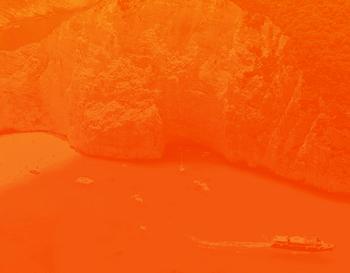Skorba Temples lie in fields overlooking Zebbiegh, a hamlet near Mgarr, in northwest Malta. The site comprises two temple remains, side by side. Skorba, excavated in the 1960s, is one of the most informative sites since it was left untouched during the first two phases of archaeological digs at temple site in the early 19th and 20th centuries.
At Skorba, an earlier settlement was swept aside during the Ggantija phase, around 3500 BC, when a typical trefoil temple was constructed. The remains consist of the stone paving of the entrance passage, with its perforations to carry libation offerings, the torba floors of the apses, and one of the megalithic uprights, a 3.40 metre high slab of coralline limestone. Also of note are a step, once covered with pitting decoration, a porthole niche and two trilithon altars against the rear walls. Later alterations were made during the Tarxien phase and the Bronze Age.
The use of globigerina limestone in the construction is noteworthy since it is not present in the immediate surface geology around Skorba. The nearest source was likely to have been a mile away. To transport blocks weighing more than one tonne across a mile of open country must have been an extraordinary feat.
A second temple was added to the east of Skorba in the Tarxien phase. It comprises four apses and a central niche. It was in a more ruinous state when found; the megalithic blocks in the angle of the lane were probably an external shrine at the end of the facade, much like those found at the better-preserved temple at Tarxien. The site yielded a number of querns of coralline limestone. These were found in numbers in the 'Ggantija' hut west of the temple. Flint and chart objects as well as obsidian from the Italian Islands of Lipari and Pantelleria (lying north-east and south-west of Sicily respectively) were fairly abundant.
The earliest structure identified on the site is an almost straight length of wall. Among the mound of domestic waste on its north side, which included charcoal and carbonised grain, were several fragments of daub, accidentally baked. In the field east of the eastern temple, a much more extensive structure came to light. It consisted of two rooms dated to the Red Skorba phase around 4100 BC. The irregularity of the floors, the unlevelled surface of bedrock, seems to preclude the site's domestic use. The group of figurines found in the northern room, now on display at the National Museum of Archaeology , also suggest that this building had a religious function. It may be considered then a true predecessor of the temples which first appeared some centuries later.
Ta' Hagrat, lying in a picturesque and evocative setting on the outskirts of Mgarr, is an important temple site. Dating from around 3600 - 3300 BC, it is the earliest temple building in Malta. Ta' Hagrat is smaller than many of the Islands' temples, at 15m long internally, but it is better preserved.
The temple, with its characteristic, imposing façade, is almost undoubtedly a partner to Skorba temples lying just a kilometre away. Ta' Hagrat comprises a double temple consisting of two adjacent trefoils both of which are less formally planned than is usual in temple construction. The smaller temple abuts the major one on the north side.
As with many temple finds on the Islands, Ta' Hagrat's discovery was haphazard. In 1923, an interesting mound was sighted in a field at Mgarr. Remains of a fine trilithon were still standing and a magnificent lintel lay on the temple floor. The owner of the field is reported to have used some of the stones to build a house.
Two year's later, in 1925, Sir Temi Zammit, Malta's first Director of Museums, excavated the site. Although the dig yielded distinctive pottery, the site was not at that time deemed to be of much importance. The plentiful pottery of earlier date did though suggest that these two temples replaced an earlier village. Further excavations in 1953 were unable to shed much more light on the significance of the site.
It was not until the early 1960s, when further work was carried out by renowned British archaeologist David.Trump, that the two Ta' Hagrat temples were accurately dated: the larger was placed in the Ggantija phase (3600-3000 BC); the smaller identified as from the Saflieni phase (3300 - 3000 BC). The result of all these excavations is a host of artefacts including a unique find - a small limestone model of a temple.
The temple is set in the middle of a large semicircular forecourt. The impressive façade with a monumental doorway was reconstructed in 1937. Two steps lead up to the main entrance and a corridor flanked by huge uprights of coralline limestone; three on each side, which once supported large hard-stone slabs. The corridor beyond the entrance is paved with large stone blocks placed with great accuracy. The three apses around it were partially walled off in a later construction phase. They are constructed with roughly-hewn stone walls, had a hard torba floor. The corbelled masonry forming the curved walls suggests that the temple was roofed. Corbelling was to narrow the roof diameter as local timber was not of sufficient length to span the gap.


Similar Topics
-
Tarxien Temples near Paola Malta
Posted by Sliema2 in Malta and Gozo Discussion Forum
-
Hagar Qim & Mnajdra temples Malta
Posted by Sliema2 in Malta and Gozo Discussion Forum
-
Anyone tell me about Hotel L'Mgarr closing
Posted by jayjaya in Malta and Gozo Discussion Forum
-
Building work at Grand I'Mgarr...Gozo
Posted by jayjaya in Malta and Gozo Discussion Forum
-
OV Temples and Tavernas
Posted by Lady Scorpio in Cruises
